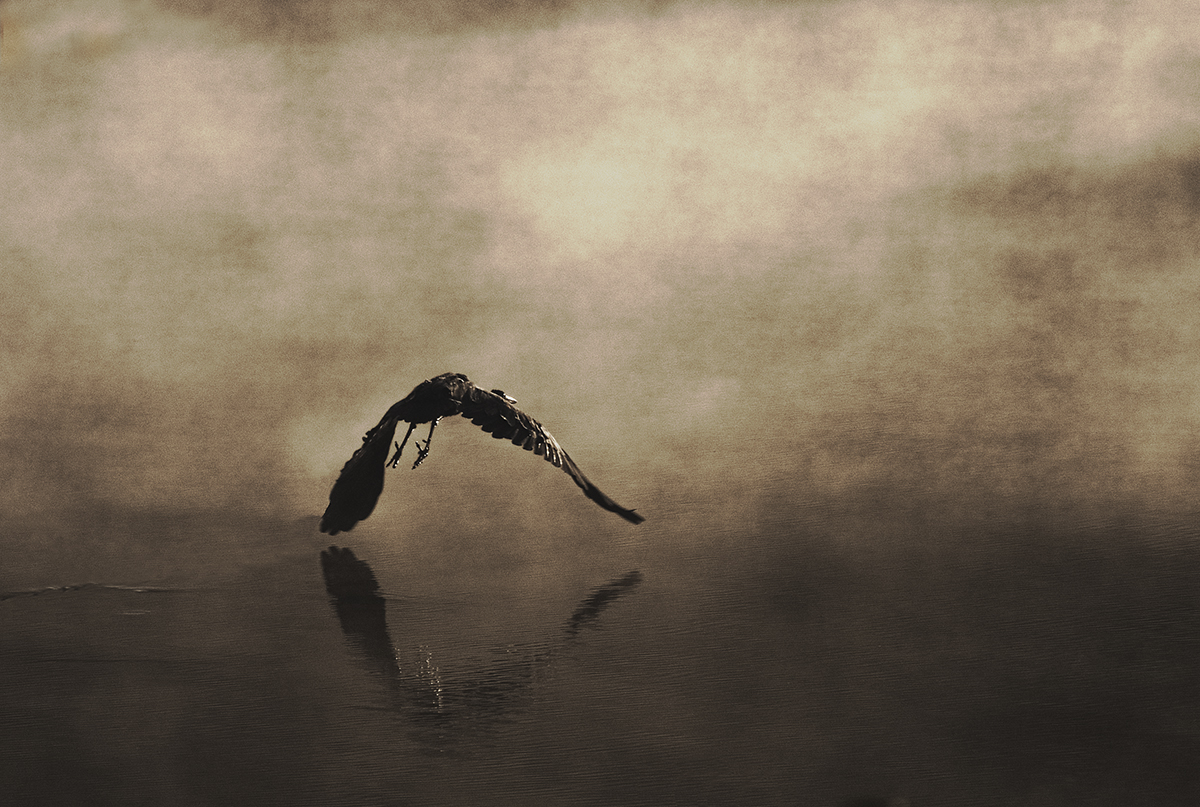
Ascent into Morning

Ascent into Morning
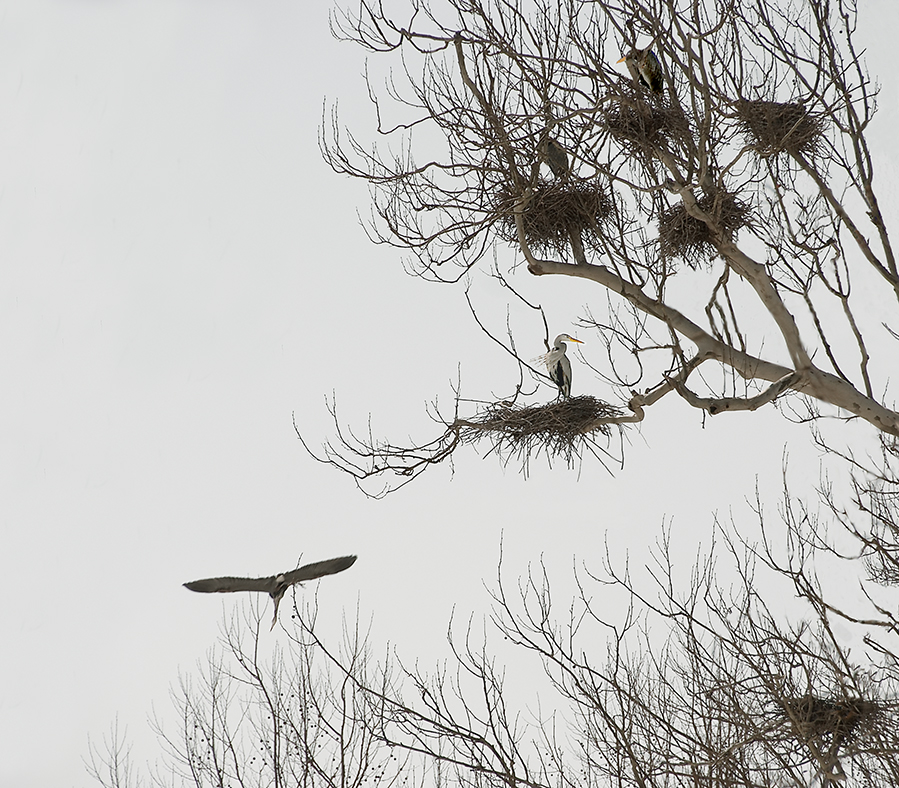
“Heron’s Descent”
“Heron’s Descent”
This image speaks to one of nature’s less well known contradictions; the great blue heron, a sacred totem and spirit animal among Native Americans, a symbol of serenity, self reliance and solitude in western cultures, an extraordinary creature whose virtues and universal reverence belie the absurdity of its behavior during mating season.
I took this photo thirteen years ago after Kate and I spotted a number (aka siege) of herons building nests in a large sycamore in Peninsula, Ohio. Apart from the highly agitated nest-bound females, the males also were contributing to the racket. After dutifully returning to their nests with individual sticks, the males quite naturally expected a little adulation for their efforts, volubly exhorting their mates to express gratitude. Adding to the dissonance, herons apparently aren’t above thievery as birds leaning precariously from their nests would stretch their necks to pilfer material from their neighbor. As transgressors were caught in the act, the tree would erupt with indignant shrieks, enough to disabuse anyone of the notion herons are silent and solitary.
All of this evoked a childhood memory as I recalled my fascination with “The Thurber Carnival”, a book and wedding present my parents kept on their coffee table. James Thurber’s drawings captivated me as a child, particularly one depicting “The Battle Between the Sexes” a satiric drawing of men and women wrestling and battering one another on an outside balcony – a scene that surfaced after languishing in my memory for almost sixty years and one in which substituting herons for humans could be easily imagined.

“Canto XXXI”
As Monday (3/8/20) dawned rainy and gray with little prospect for improvement, I thought I would try to find an uplifting image to post and remembered a ranunculus I had photographed a few years ago. It reminded my son, Will, of an illustration by Gustave Doré, the great 19th century illustrator of Dante’s “Divine Comedy”. For those who may remember Dante’s masterpiece of the early Renaissance, you also may recall the third and last book (“Paradiso”) as Dante ascends through nine spheres of heaven until he reaches the Empyrean; his allegorical ascent and union with God. Metaphorically he sees the spheres as concentric petals of a white, celestial rose.
Doré’s illustration of Canto 31, for which this photo of the ranunculus is named, depicts the series of spheres (planets encircling the earth and fixed stars) with the Empyrean/Divine residing at the center. This ranunculus seems a humble substitute for Dante’s vision but hopefully it helps to brighten these “rainy days and Mondays” a bit.
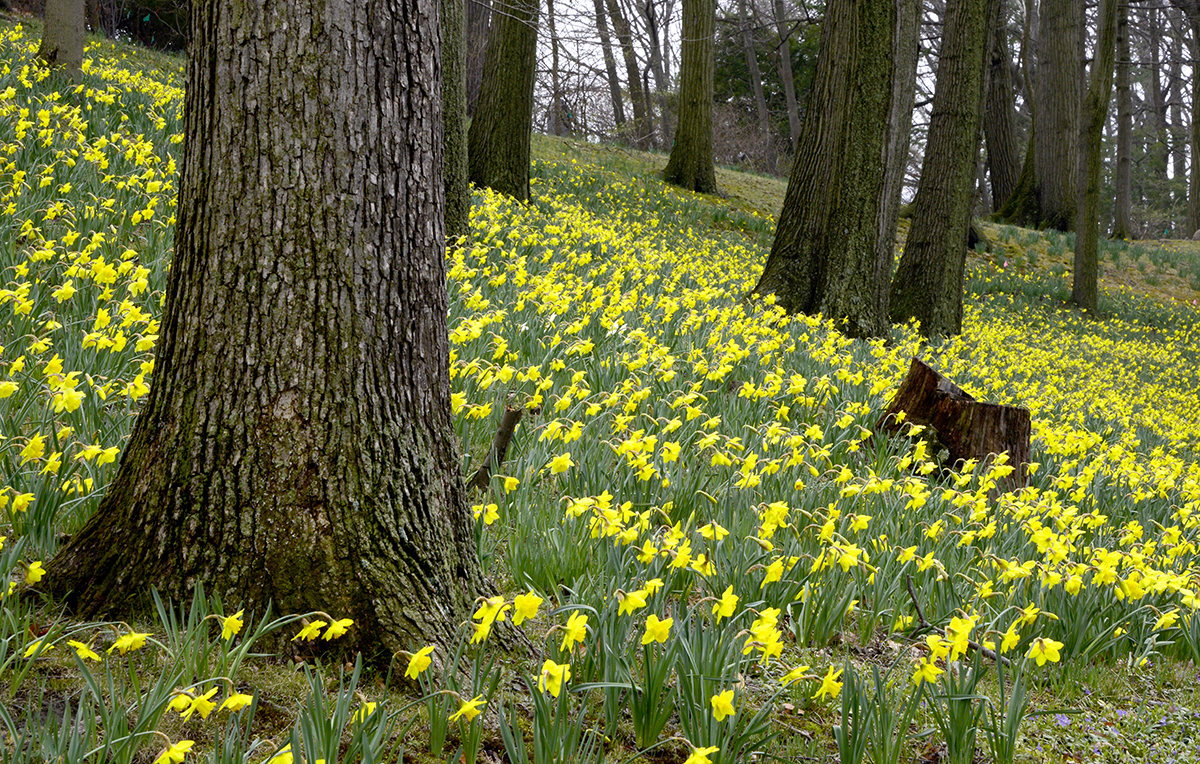
Daffodil Hill, Lakeview Cemetery, Cleveland, Ohio
“I Wander Lonely As A Cloud” William Wordsworth
My wish to all who celebrate, a Happy Easter and to those who do not I wish great peace in a difficult time. I leave with you today (April 9, 2020) this image of daffodils blooming on “Daffodil Hill” in Lakeview Cemetery earlier this week. And I reprint one of my favorites, a classic romantic poem of the 19th century by William Wordsword to lift your spirits.
” I wandered lonely as a cloud
That floats on high o’er vales and hills,
When all at once I saw a crowd,
A host, of golden daffodils;
Beside the lake, beneath the trees,
Fluttering and dancing in the breeze.
Continuous as the stars that shine
And twinkle on the milky way,
They stretched in never-ending line
Along the margin of a bay:
Ten thousand saw I at a glance,
Tossing their heads in sprightly dance.
The waves beside them danced; but they
Out-did the sparkling waves in glee:
A poet could not but be gay,
In such a jocund company:
I gazed—and gazed—but little thought
What wealth the show to me had brought:
For oft, when on my couch I lie
In vacant or in pensive mood,
They flash upon that inward eye
Which is the bliss of solitude;
And then my heart with pleasure fills,
And dances with the daffodils.”
William Wordsworth
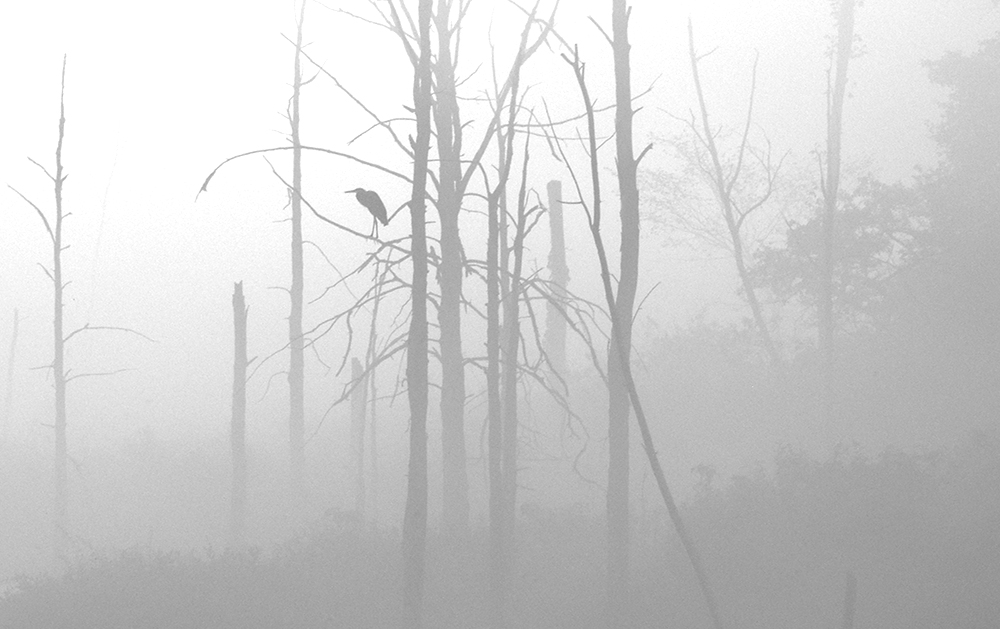
Awaiting a New Day
Two weeks after my father’s death, with camera in hand, I picked my way through the moonless black of predawn along the north end of Schweitzer marsh. The early hour, made even less visible by a dense April fog, weighed on the land and spirit. The mist was heavy and I had only to blink my eyes to know it was there.
My first encounter with grief and I had chosen to come to the place that had illuminated “the way home” in other difficult times in my life. I really had no expectation for answers that morning, not even a sense of what I was searching for … only an indistinct hope the marsh might provide some direction, a means to cope, perhaps as it had lifted my spirits on occasion with a glimpse of wildlife or conferred the favor of the landscape when least expected.
Slowly, imperceptibly, light was revealing form. A heron appeared above the fog, perched in a pin oak, looking east, waiting for the new day.
I haven’t seen this image in fourteen years but it now makes sense. As I look at the heron I am reminded tonight of Henry David Thoreau’s concluding words in “Walden”, “Only that day dawns to which we are awake. There is more day to dawn.”
Words to remember in these dark times.
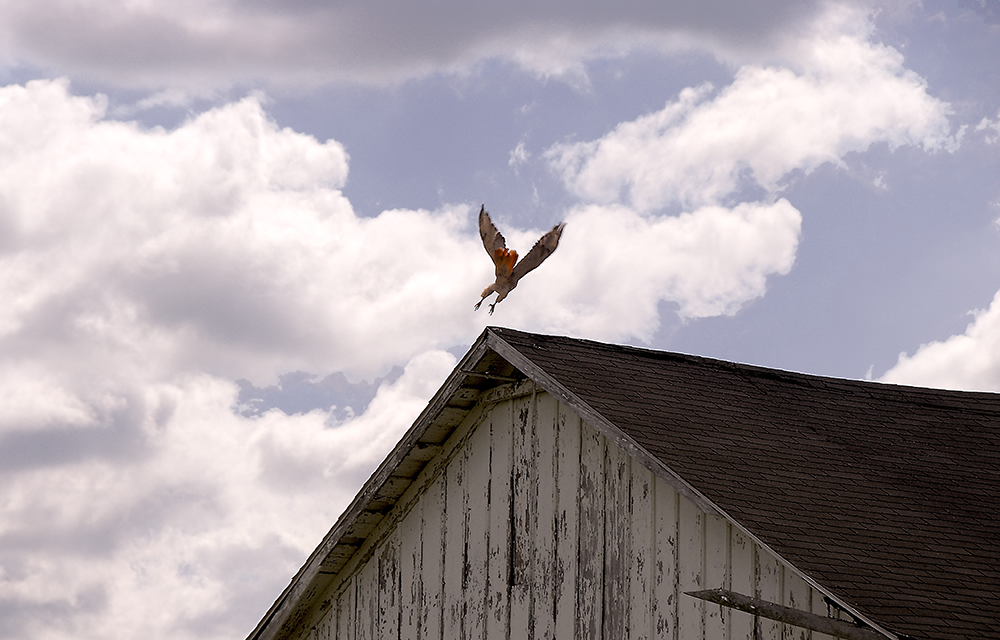
Red Tail at Noon
For the last 12 years this Red Tailed hawk has staked claim to the 400 acres that comprise Squire Valleevue Farm in Hunting Valley, Ohio. In 2008 I first spotted him at the east end of the farm and guessed him to be immature in light of his subdued colors. When this photo was taken in the spring two years later his red tail had become prominent and his overall coloration less mottled. Each day he traces the tree line along the farm’s perimeter keeping a mostly silent vigil over the grounds. Descending onto the ridgeline of the small barn at the east end of the property, he hunts the field mice that make the structure’s foundation home.
After the pandemic recedes and Squire Vallevue reopens to visitors I would encourage others to walk the property and marvel as he soars above.
Designed by Elegant Themes | Powered by WordPress